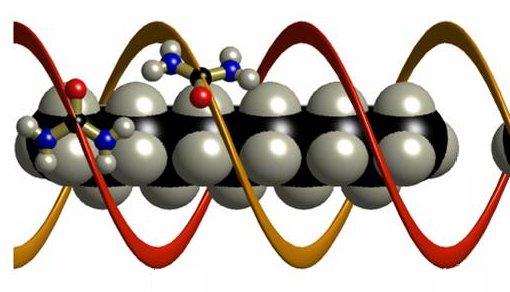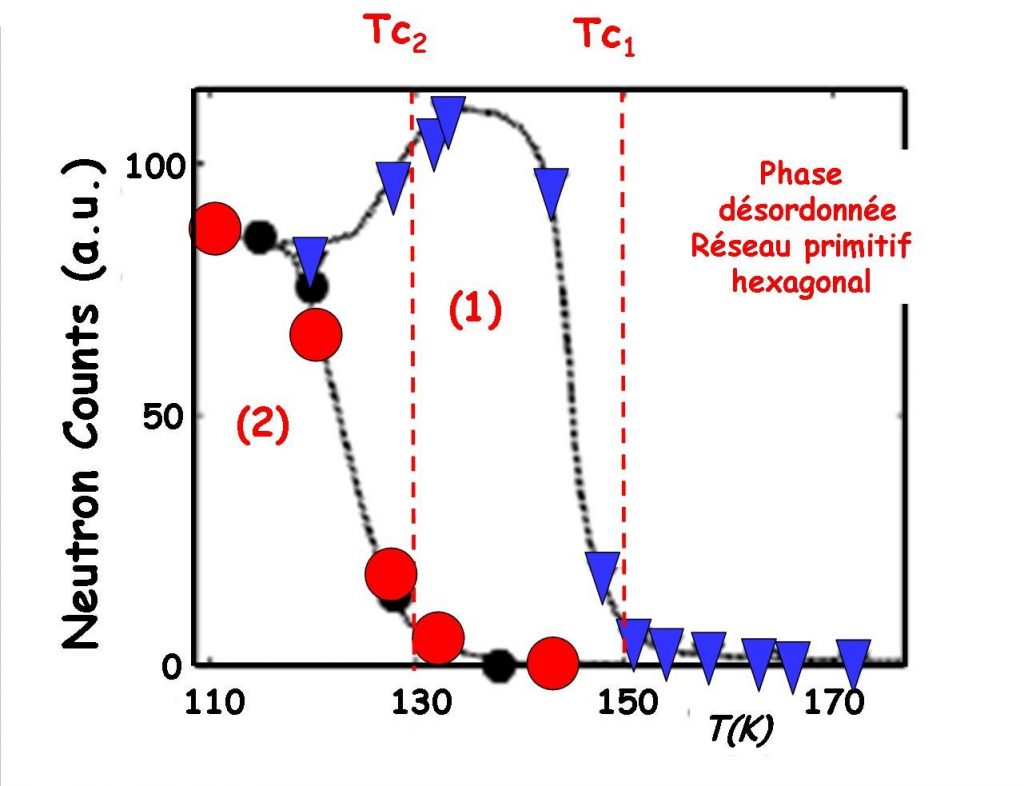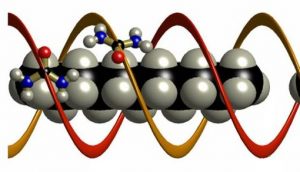(1,2) B. Toudic, P. Garcia, C. Odin, P. Rabiller, C. Ecolivet and E. Collet,
P. Bourges3, G.J. McIntyre4, M.D. Hollingsworth5, T. Breczewski6
2 CNRS, UMR 6251, IPR, 263 Avenue du Général Leclerc, 35042 Rennes Cedex, France.
3 Laboratoire Léon Brillouin, CEA-CNRS, CEA Saclay, 91191 Gif-sur-Yvette, France
4 Institut Laue-Langevin, 38042 Grenoble Cedex 9, France.
5 Department of Chemistry, Kansas State University, Manhattan, KS 66506, USA.
6 Facultad de Ciencias, Universidad del Pais Vasco, Apdo 644, Bilbao, Spain.
Symmetry and order are essential properties in the description of the various states of matter and their physical properties. These have long been synonymous with periodicity for solids, also used to define the notion of crystal, paradigm for many topics of condensed matter during the XXth century.
One way to probe the structure of matter at the atomic scale is to use radiation diffraction (such as X-rays, or the wave associated with particles: neutrons, electrons …). The presence of a long-distance order is then characterized by the presence of diffraction peaks, forming an image reflecting the symmetry of the object. This led to the discovery in the recent decades of non-periodic materials, but still with long range order as evidenced by discrete peaks in their diffraction spectrum. Physicists represent this type of crystals as periodic crystals but in a super-space (with dimension 3 + d, which represent the 3 usual dimensions of space and the dimension d of the internal space).
The systems understudy are aperiodic supramolecular model systems consisting of an urea single crystal (host structure) and alkane molecules (invited molecules), whose length is determined by the number nC of carbon atoms in the molecule (nC>7). Crystalline plane of urea have a structure of hexagonal symmetry. Along the C perpendicular axis, the structure exhibits a double helix forming channels in which alkane molecules may be inserted. At room temperature, these molecules are ordered along the C axis of the urea lattice, but according to an aperiodic order.
Neutron diffraction spectrum along the C* axis. Crossing the first critical temperature Tc1 superstructure rods (h = 1/2) along C* appear that indicates a change in the symmetry of the system. Along the rods, incommensurate discrete diffraction peaks are characteristic of the new aperiodic ordered structure. This mesh doubling is completely original because the observed phase transition between the two incommensurate phases can be only properly described by means of the 4-dimensional space. A second structural phase appears below Tc2.

These aperiodic materials have very unusual dynamic properties like the gliding of the molecules in the channels with zero energy cost (as a result of the incommensurability between the length of the host crystal unit cell and the length of the invited molecules). It was then a priori accepted that the structural reorganizations in such materials are mainly driven by the degree of freedom of the usual space.
However, it has been just observed by a neutron diffraction study(i), that phase transitions where the structure is only modified by the degrees of freedom hidden in the internal space of the super-space indeed exist [1]. Thus, the nature uses these additional degrees of freedom to create new states of matter that cannot be imagined at 3 dimensions. These results bring new opportunities for the understanding of complex organizational structures, the manipulation of nano-materials, nano-fluidics or translocation of polymers. In addition, the coupling between the richness of the structural system and its rich structural dynamics generates new physical properties which opens up very interesting perspectives in many disciplines, from materials science to biology.

(i) Work performed at the high neutron flux reactor “Orpheus”, Laboratoire Léon Brillouin (CEA – CNRS, Saclay).
References :
|
|
[1] Hidden degrees of freedom in aperiodic materials B. Toudic, P. Garcia, C. Odin, P. Rabiller, C. Ecolivet, E. Collet, P. Bourges, G.J. McIntyre, M.D. Hollingsworth, T. Breczewski, Science Report 319 (2008) 69. see also : A Phase Transition Hidden in Higher Dimensions P. Coppens, Science 319 (2008) 41. |
[2] Pressure-induced lock-in in an aperiodic nanoporous crystal
B. Toudic, F. Aubert, C. Ecolivet, P. Bourges, and T. Breczewski
Phys. Rev. Lett. 96, 145503 (2006)
[3] Interactions in Self-Organized Nanoporous Organic Crystals
L. Bourgeois, B. Toudic, C. Ecolivet, J.-C. Ameline, P. Bourges, F. Guillaume, and T. Breczewski
Phys. Rev. Lett. 93, 026101 (2004)
[4] First one-dimensional stress-strain experiments inside an aperiodic inclusion compound: Evidence of depinning effects
L. Bourgeois, C. Ecolivet, B. Toudic, P. Bourges, and T. Breczewski
Phys. Rev. Lett. 91, 025504 (2003)


